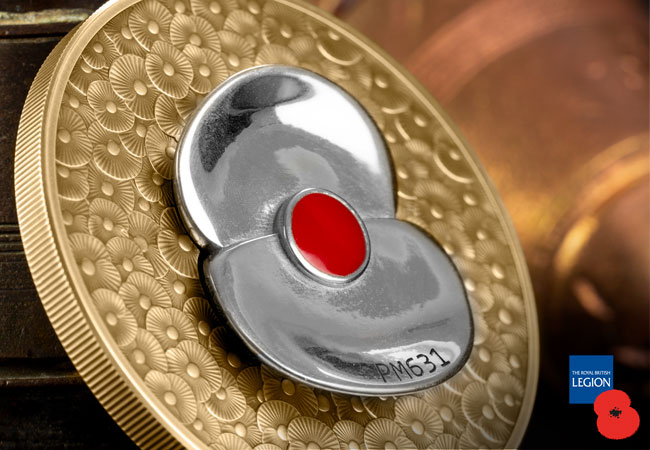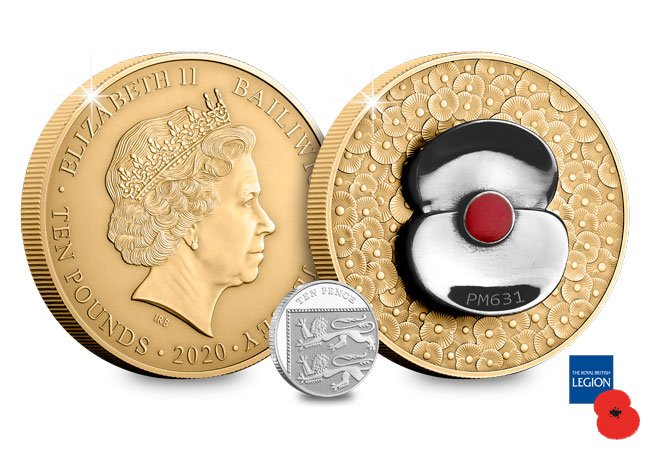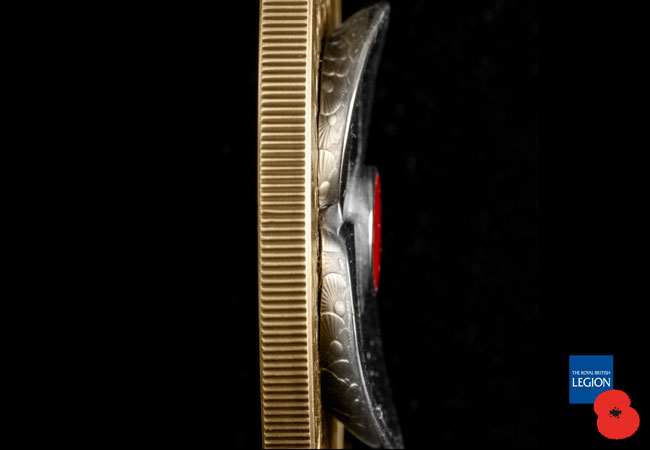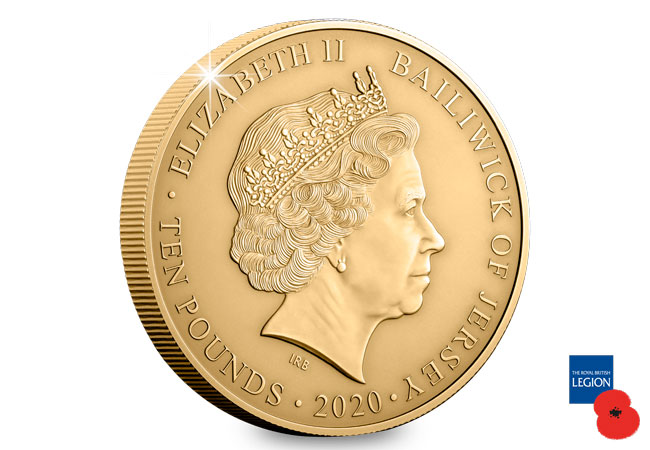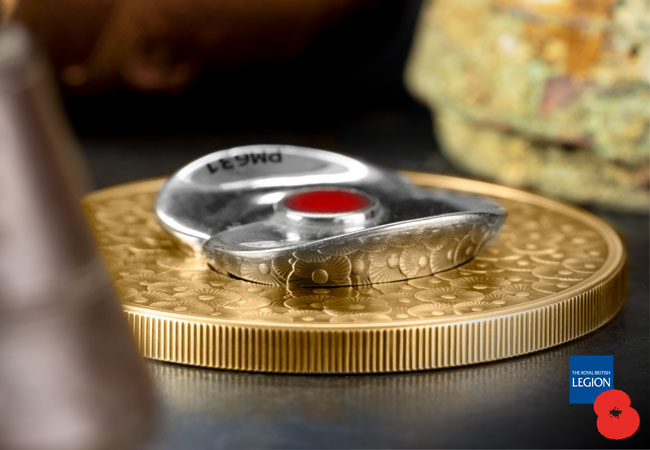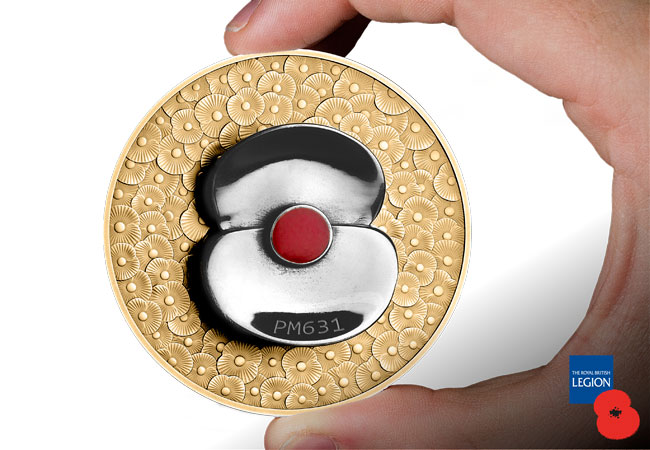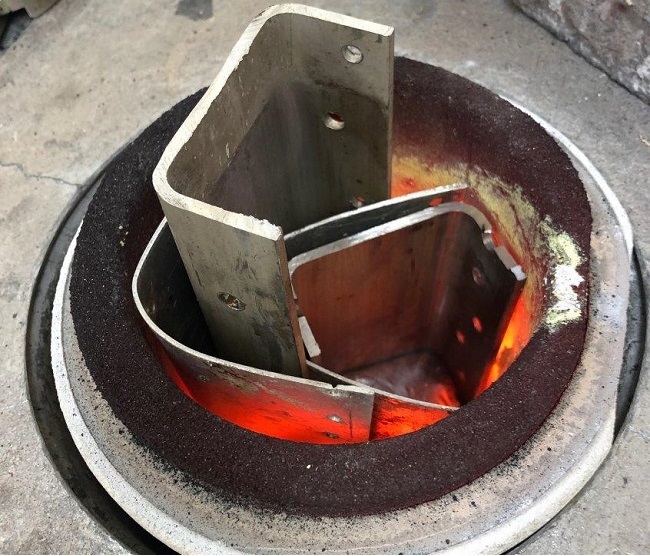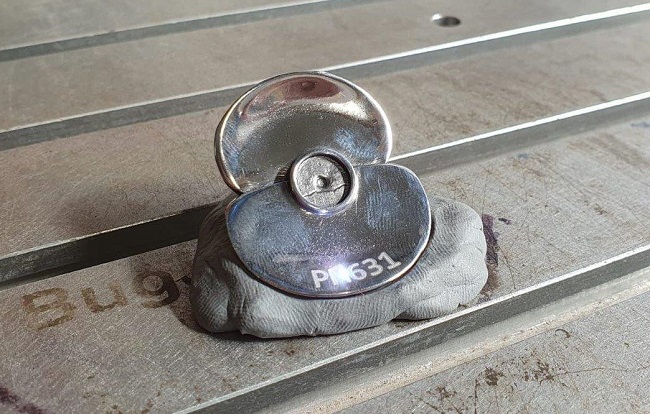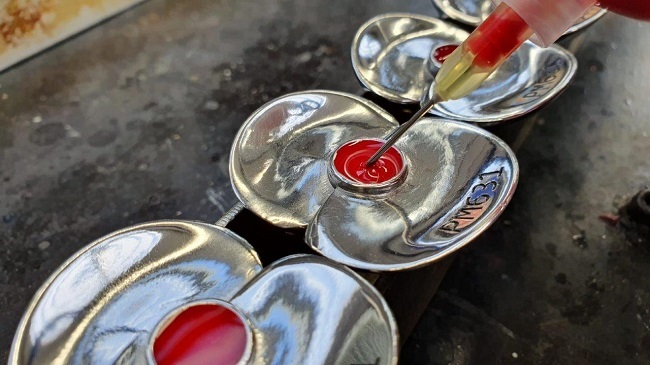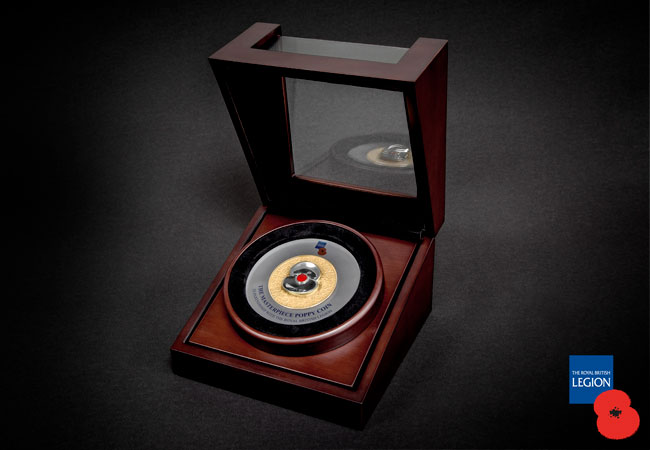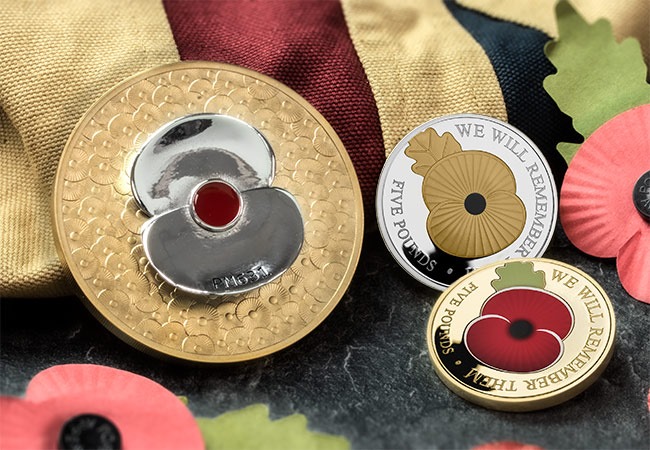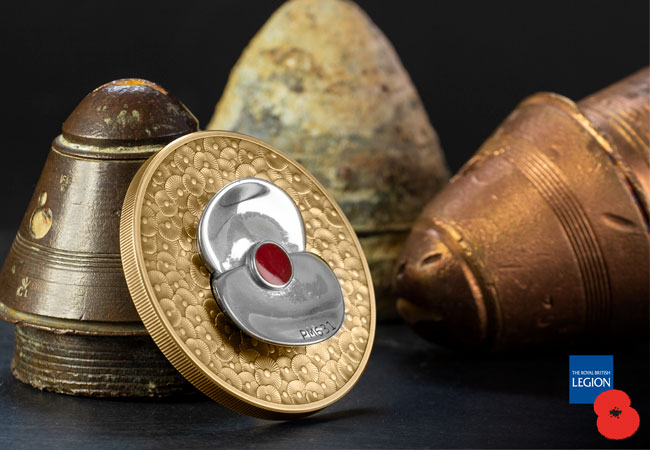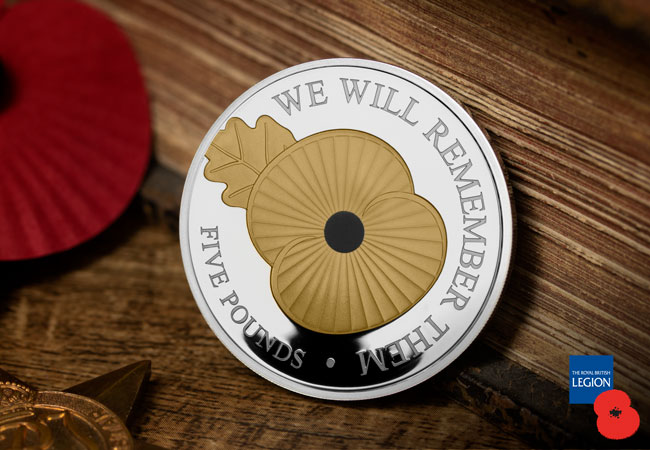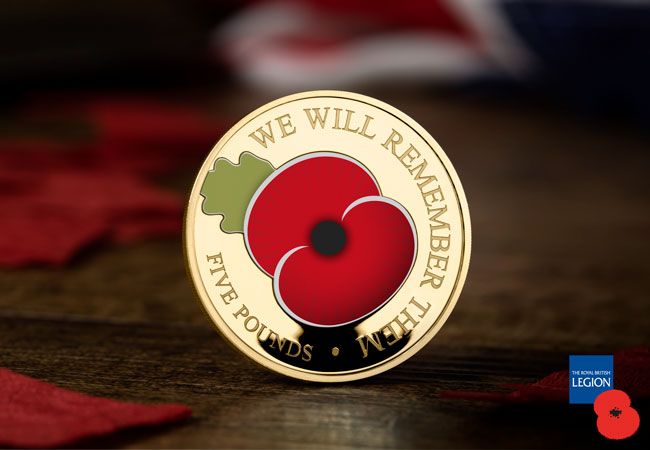Second World War
Unboxing the 2020 Masterpiece Poppy Silver 5oz Coin
This year marks 80 years since the Battle of Britain, and to commemorate this poignant anniversary 300 Masterpiece Poppy Coin’s have been released in support of The Royal British Legion.
And considering it’s been crafted from a genuine Spitfire, which was part of the Battle of Britain memorial flight for nearly FIFTY years, means that this coin has a remarkable story to tell…
So, join Adam in our latest unboxing video where he takes a closer look at this brand new Silver 5oz Poppy coin that’s truly worthy of its Masterpiece title.
If you’re interested
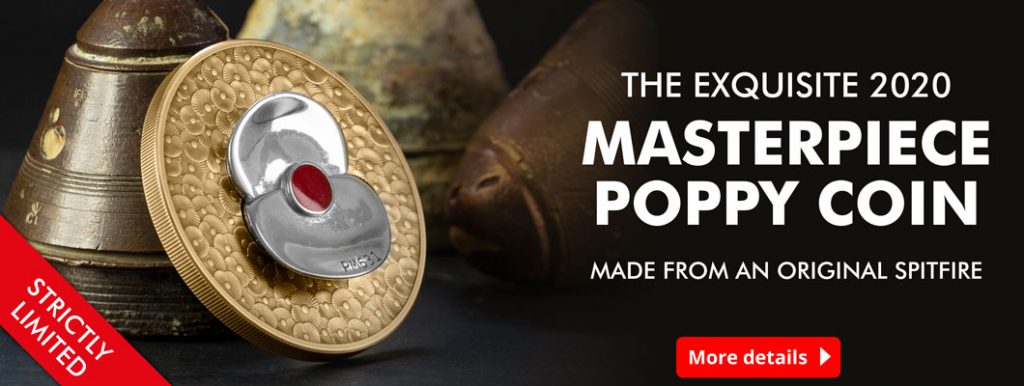
Click here to be one of only 300 collectors to own the 2020 Masterpiece Poppy Silver 5oz Coin >>
The making of a true Masterpiece…
Each year Remembrance Sunday provides an opportunity for the nation to reflect on those brave men and women who gave their lives fighting for our freedom. But this year will be especially poignant. As we also commemorate the 80th Anniversary of one of the truly remarkable chapters in our nation’s history – the Battle of Britain.
Introducing the official 2020 Remembrance Masterpiece Silver 5oz Poppy Coin
There is one coin that avid collectors await the release of – the “Masterpiece Poppy Coin”. The name says it all. Cutting edge minting techniques and materials, representing the pinnacle of craftsmanship. But let me explain what makes this year’s Masterpiece Poppy so special…
This year marks the 80th anniversary of the Battle of Britain. Take a look at the images and you’ll see that a single stylised Royal British Legion poppy, proudly sits on top of this coin. Multiple poppies have then been engraved into the surface of the coin, resulting in an exceptional 3 dimensional effect.
But the incredibly rare facet of this year’s poppy coin is that it’s been crafted from a genuine piece of Spitfire.
Expertly crafted from a Spitfire with a remarkable story to tell
Incredibly, this year, the silver poppy that adorns the reverse of each of these coins has been made from a piece of Spitfire PM631 – ensuring each coin is uniquely different and features a piece of tangible aerial history.
Originally built in late 1945, the Spitfire PM631 saw service with the Battle of Britain memorial flight for nearly FIFTY years between 1957 and 2006. You may also remember that it had a starring role in a famous WWII Movie – Battle of Britain, made in 1969.
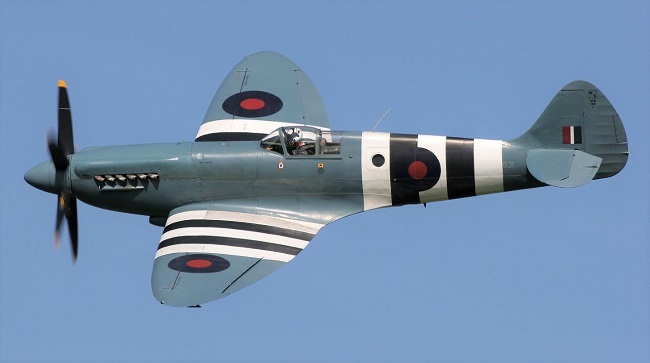
Once the Spitfire piece has been melted down and poured into a shaped mould, it is cooled and cleaned to create the high-relief poppy. After this, it is laser engraved with the official Spitfire plane from which the metal was taken – PM631. Check out the images below to see the process the Spitfire metal goes through to come a Masterpiece poppy…
But even then, it is important to remember, this is NOT a cast piece. The surface of the coin has actually been struck in sterling silver and has then expertly plated in 24ct gold. The finish is a stunning matte appearance achieved using a technique called ‘Sandblasting’. This means it has all of the detail that you expect from a commemorative coin but allows you to touch the coin and hold a genuine, iconic piece of history in the palm of your hand.
As I am sure you can appreciate, given all of the individual elements that have to be carefully curated for each individual coin, the edition limit as a consequence is incredibly low. In fact, only 300 of these coins have been produced, with number one fittingly being donated to The Royal British Legion themselves. Which means only 299 coins remain for collectors.
We do not expect these coins to be around for long. And remember, for each coin sold a donation will go straight to The Royal British Legion in support of all their work.
Available now – with a donation to The Royal British Legion
The 2020 Masterpiece 5oz Silver Proof Poppy Coin is available to own right now from The Westminster Collection, although they are expected to sell out quickly.
To further support the work of The Royal British Legion, a donation of £59.50 from the sale of each coin will go directly to the charity, helping them to continue to provide financial, social and life-long support to the Armed Forces community.
£1,100,000 Milestone
What’s more, since our partnership began and through the sales of commemorative Remembrance and Poppy-themed coins, collectors have helped raise an incredible £1.1 Million for The Royal British Legion!
This is an achievement that everyone is immensely proud of, and we are hugely thankful to collectors for helping raise such an amazing amount.
If you’d like to find out more about the fantastic work that The Royal British Legion do and why we are so proud of this milestone £1.1 Million that has been raised for the charity, then click here to read more…
FIRST LOOK at the complete 2020 Remembrance Poppy Coins!
The Remembrance Poppy Coins issued in partnership with The Royal British Legion are amongst the most popular releases each year. And this year is proving no different.
Have you secured your favourite 2020 Poppy Coin yet?
If not, join Adam and Yasmin as they take a closer look at the range in our Special Edition 2020 Remembrance Coin Show below.
The highlight? You’ll get an exclusive FIRST LOOK at this year’s Masterpiece 5oz Silver Coin that’s been crafted from a genuine piece of Spitfire!
As seen in the show…
The 2020 Masterpiece Poppy Silver 5oz Coin
- Struck from 5oz of Pure Silver
- Strictly limited to JUST 300 worldwide
- Crafted from a genuine piece of Spitfire
- Price: £595 (+£7.99 p&p) or payable with an initial payment of £59.50 (+p&p) followed by a further 9 interest free instalments of £59.50 every month, subject to acceptance and status.
Click here to order your 2020 Masterpiece Poppy Silver 5oz Coin >>
2020 Remembrance Poppy Silver Proof £5
- Sterling Silver Proof Finish
- Intricately plated rose-gold poppy
- Just 2,020 Available
- Price: £90 (+£3.99 p&p) or payable with an initial payment of £18 (+p&p) followed by a further 4 interest free instalments of £18 every month, subject to acceptance and status.
Click here to order your 2020 Remembrance Poppy Silver Proof £5 >>
2020 Gold-plated Proof Poppy £5 Coin
- Plated in 24ct gold
- Struck to a pristine Proof finish
- Strictly limited to JUST 4,950 worldwide
- Price: £25 (+£3.99 p&p)
Click here to order your 2020 Gold-plated Proof Poppy £5 Coin >>

